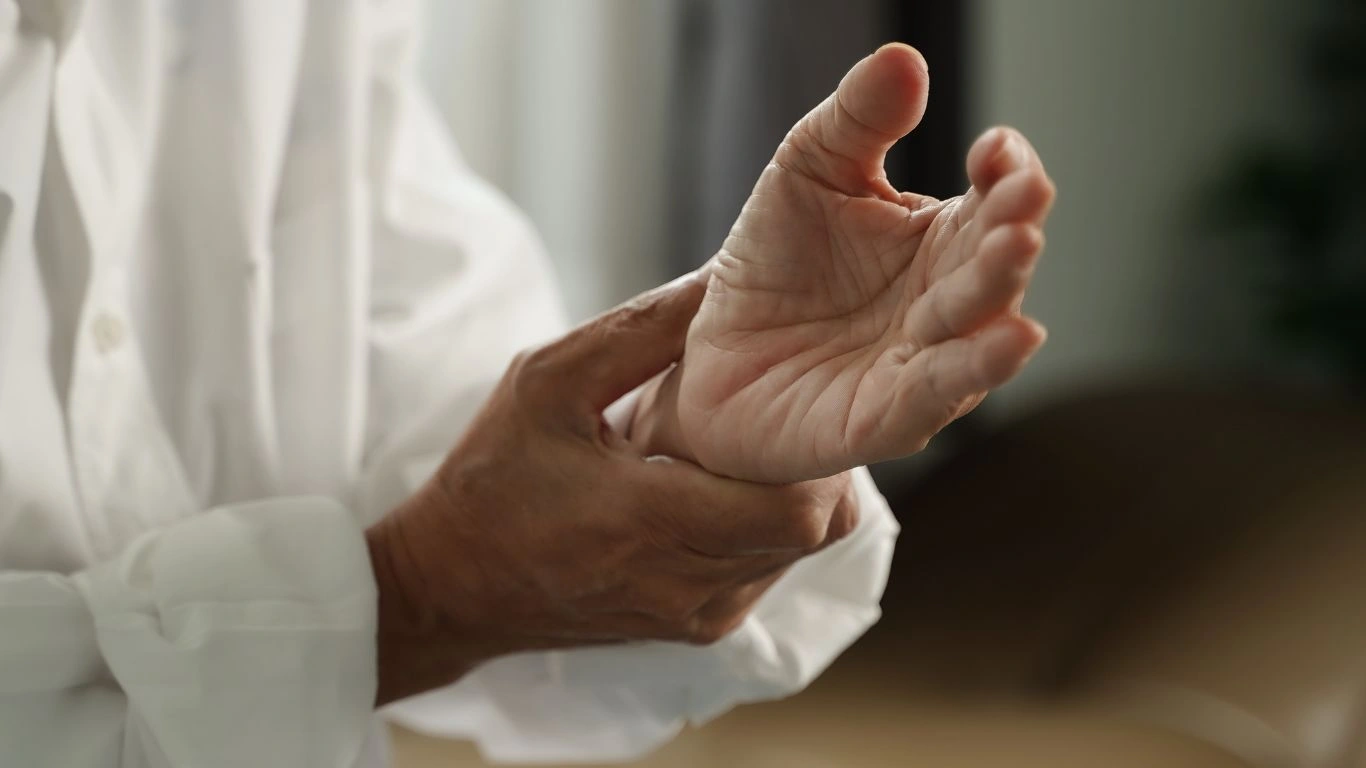Improve Hand Function with These Rheumatoid Arthritis Tips
Rheumatoid arthritis (RA) is a chronic autoimmune disease that affects millions of people worldwide, including many of my patients. As a Rheumatology Nurse Practitioner, I’ve seen firsthand how it can impact a person’s daily life—particularly when it comes to hand function. The pain, stiffness, and swelling associated with RA can make even simple tasks, like opening a jar or typing on a keyboard, feel impossible. But don’t lose hope! In this article, we’ll explore various ways to improve hand function in those suffering from rheumatoid arthritis. I’ll also share some of the strategies I’ve used with patients that have made a real difference in their lives.
Understanding Rheumatoid Arthritis and Its Impact on Hand Function
Rheumatoid arthritis is an inflammatory condition that primarily affects the joints, and while it can target any joint in the body, the hands are often the first to show signs of the disease. This can make a huge difference in quality of life, as the hands are essential for most of our daily activities. The inflammation in the joints can cause swelling, pain, and a decrease in mobility, which in turn affects the function of the hand. Over time, this can lead to joint damage and deformities if left untreated.

But here’s the good news: there are plenty of ways to improve hand function, even if you’ve been living with RA for a while. Whether you’re newly diagnosed or have been managing RA for years, taking proactive steps to care for your hands can lead to noticeable improvements. In my experience, a combination of medical treatments, physical therapy, assistive devices, and lifestyle changes can make a significant difference.
Early Intervention is Key
One of the most important things I’ve learned as a Rheumatology Nurse Practitioner is that early intervention is crucial. The earlier you address rheumatoid arthritis, the better your chances of preventing severe joint damage and preserving your hand function. This doesn’t just mean starting medication early—it also means incorporating other strategies like physical therapy and hand exercises to keep your joints as healthy as possible.
Hand Exercises for Rheumatoid Arthritis: Strengthening and Flexibility
It might sound a little counterintuitive, but exercise is actually one of the best things you can do for your hands when dealing with rheumatoid arthritis. Of course, you want to avoid overexertion, but gentle, targeted exercises can help improve both the strength and flexibility of your hands. I’ve worked with many patients who were hesitant to move their fingers because they were afraid of the pain, but I always emphasize that moving the joints in a controlled, pain-free range of motion can help maintain and even improve functionality.
Some of the most effective hand exercises for RA include:
- Fist Clench: Gently make a fist, hold for a few seconds, and then slowly open your hand. Repeat 10 times.
- Finger Extensions: Spread your fingers as wide as you comfortably can, hold for a few seconds, then relax. Do this 10 times.
- Thumb Stretch: Gently stretch your thumb away from the rest of your fingers, holding for a few seconds before relaxing. Do this on both hands.
It’s important to do these exercises regularly—preferably multiple times a day—to help keep your hands as functional as possible. And don’t worry, you don’t have to become a professional athlete of the hands! Even 10 minutes a day can make a noticeable difference over time.

Splints and Assistive Devices: Tools That Can Help
Another strategy that can make a big difference in improving hand function is the use of splints and assistive devices. I’ve recommended splints to many of my patients, especially those who experience severe pain or deformities in their hands. These devices help by providing support to the joints, reducing strain, and preventing further damage.
There are a variety of splints available, depending on the specific needs of the patient. Some are designed to be worn while sleeping to prevent joint deformities, while others are used during the day to stabilize the hand during activities. In addition to splints, other assistive devices such as button hooks, jar openers, and specialized utensils can make everyday tasks easier and less painful.
One of the most rewarding moments I experience as a healthcare provider is seeing my patients regain some independence after they start using these tools. It’s incredible how something as simple as a specially designed pen or a jar opener can dramatically reduce the frustration that comes with RA.
Medication: Managing Inflammation to Protect Hand Function
Of course, one of the primary ways to improve hand function is by managing the underlying inflammation caused by rheumatoid arthritis. Anti-inflammatory medications, disease-modifying antirheumatic drugs (DMARDs), and biologics can all play a significant role in controlling the disease and preventing joint damage. It’s not just about taking medication—it’s about finding the right combination that works for you, and that’s something I emphasize to my patients. Everyone’s RA journey is unique, so what works for one person might not work for another. Be patient, and don’t hesitate to ask your healthcare provider about different options.
In addition to the prescribed medications, I always recommend a healthy diet rich in anti-inflammatory foods. Omega-3 fatty acids, antioxidants, and plenty of fruits and vegetables can help manage inflammation and support joint health. I often tell my patients, “Your body is your best medicine.” With the right approach, managing your RA doesn’t just mean relying on medication—it’s about creating a holistic routine that promotes overall well-being.

Conclusion: A Multi-Pronged Approach
Improving hand function with rheumatoid arthritis takes a combination of approaches, including early intervention, regular hand exercises, the use of assistive devices, and, of course, medication. Through my years of experience, I’ve seen firsthand how a holistic approach to RA can truly transform a person’s life. The road may be long, but with the right tools and mindset, it’s absolutely possible to regain your independence and live a more comfortable life.
Nutrition and Lifestyle Changes: Supporting Hand Function from the Inside Out
As someone who’s worked closely with patients battling rheumatoid arthritis (RA), I’ve seen how much lifestyle and nutrition can influence the progression of the disease and, more importantly, hand function. It’s not just about the medications or exercises you’re doing; what you’re putting into your body matters. In my practice, I’ve emphasized how adopting certain dietary changes and healthy lifestyle habits can make a world of difference when it comes to managing RA and supporting your hands.
When it comes to RA, inflammation is the enemy. And that inflammation doesn’t just stay in the joints—it can spread throughout your body, causing pain and stiffness. This is where anti-inflammatory foods come into play. I’ve had countless patients share their success stories after making small changes to their diet. Foods rich in omega-3 fatty acids, antioxidants, and fiber can help combat inflammation, making it easier for the body to manage the chronic nature of RA.
Eating for Better Joint Health
There’s no magic pill for RA, but what you eat can certainly support your treatment plan. Foods high in omega-3 fatty acids—like salmon, walnuts, and chia seeds—are known for their powerful anti-inflammatory properties. When I talk to my patients about adding these foods to their diet, I always tell them it’s about giving their body the tools to fight inflammation naturally. I even encourage them to try supplements like fish oil if they’re not big fans of fish.
Another nutrient that’s important for managing RA is vitamin D. Many people with autoimmune diseases like RA can be deficient in vitamin D, and this can worsen joint pain and inflammation. Sunlight is a natural source of vitamin D, but it can also be found in fortified foods like milk, eggs, and cereals, or in supplements. I always recommend checking with your doctor to see if a supplement might be necessary.
There are also antioxidants to think about—like vitamins A, C, and E—found in colorful fruits and vegetables. These antioxidants help protect the joints from further damage. If you’re ever unsure where to start, I tell my patients to aim for a “rainbow plate” at every meal—lots of bright colors from berries, spinach, carrots, and peppers. It’s an easy way to make sure they’re getting plenty of vitamins and minerals to help manage inflammation.

One more thing: I encourage my patients to reduce their intake of processed foods, refined sugars, and trans fats. These have been shown to promote inflammation in the body. So, if you’re looking to give your joints a break, cutting back on these foods is a great first step. A balanced, whole-foods diet rich in these nutrients will support your hands and overall health in the long run.
Physical Therapy: A Personalized Approach to Strengthen Your Hands
When it comes to maintaining or improving hand function in rheumatoid arthritis, physical therapy is often one of the first recommendations I make. I’m a firm believer in the power of therapy to make a real, lasting difference. It’s not just about exercises—it’s about having a professional guide you through proper movements, identifying weaknesses, and ensuring you’re doing the exercises safely and effectively. I’ve had patients who were skeptical about physical therapy at first, but once they experienced the benefits, they were hooked.
Physical therapists are specialists in helping people move better and function more effectively, and when it comes to RA, they can be your best friend. They’ll work with you to create a personalized exercise plan that targets your specific symptoms and goals. If you’re dealing with a lot of hand pain or stiffness, they’ll focus on gentle, low-impact exercises to improve joint mobility, strength, and function.
Why Physical Therapy Works for RA
One of the things I love about physical therapy is how individualized it can be. A skilled therapist will assess your hands, wrists, and fingers, paying close attention to any areas of weakness or stiffness. Then, they’ll create a plan tailored to you. For some patients, the goal might be to improve grip strength so they can hold a pen or a coffee cup. For others, the focus might be on improving range of motion so they can open jars or button shirts with less pain.
Through techniques like joint mobilization, stretching, and strength-building exercises, physical therapy can help improve the functionality of the hands and prevent further damage. Many of my patients have reported that after several weeks of therapy, they feel more confident in their ability to perform daily tasks without as much discomfort or stiffness. And even though it’s hard work, the results can be incredibly rewarding.

Workplace Modifications: Protecting Your Hands at Work
If you’re working full-time or managing responsibilities at home, it’s important to think about how your environment impacts your hand function. Over time, repetitive tasks like typing, lifting, or gripping can exacerbate RA symptoms. But I’ve seen patients make a huge difference in their daily comfort by adjusting their work environments and routines.
Start by evaluating the ergonomics of your workspace. For example, if you’re typing a lot, consider getting a keyboard with softer keys or using a wrist rest to support your hands. There are also ergonomic chairs, desk setups, and tools designed to minimize strain on the hands and wrists. If you have a job that requires heavy lifting or repetitive movements, ask your employer about modifying your duties to reduce the strain on your hands.
Another option to consider is assistive technology. I’ve had patients who’ve used speech-to-text software or voice-activated tools to limit their typing or use of a mouse. These tools can be incredibly helpful in reducing the stress on your hands, especially for those with severe joint pain or damage.

With a few small adjustments, it’s entirely possible to continue working comfortably and effectively without compromising your hand health. It’s all about finding what works best for you and being proactive in making changes that keep your hands from becoming more damaged over time.
Managing Stress: The Silent Contributor to Hand Pain in RA
While we often focus on the physical aspects of rheumatoid arthritis (RA), there’s another key factor that can influence how well you manage your symptoms: stress. It’s not just an emotional issue; stress can physically exacerbate pain, including in the hands. In my years of working with RA patients, I’ve seen time and time again how stress impacts the joints, including the hands, and contributes to heightened inflammation and pain. The mind-body connection is real, and managing stress can play a significant role in improving your hand function.
When we experience stress, our bodies release cortisol, the “stress hormone.” Elevated cortisol levels over time can trigger inflammation, which in turn aggravates RA symptoms. It’s a vicious cycle that’s not always easy to break, but there are several ways to manage stress effectively and, as a result, improve the way your hands feel.
Stress Management Techniques for RA
As someone who works directly with RA patients, I always recommend incorporating relaxation and stress-relief techniques into your daily routine. Meditation, yoga, and deep breathing exercises can be incredibly beneficial for reducing stress. I’ve had several patients tell me that after just a few weeks of practicing mindfulness or guided meditation, they noticed a decrease in their pain levels and stiffness.
Exercise is another powerful stress-buster. It’s one of those things that sounds simple, but the results speak for themselves. Even something as gentle as walking or swimming can help lower stress hormones and, at the same time, improve joint mobility. The best part is that physical activity also releases endorphins—your body’s natural painkillers. So, not only will it reduce your stress, but it can also provide some relief from pain.
If you’re not sure where to start, consider beginning with something small, like a 10-minute walk or a few minutes of deep breathing each day. Over time, you can increase the amount of time you spend on these activities as they become part of your routine. The more consistent you are, the better your results will be.

Mind-Body Approaches: The Role of Cognitive Behavioral Therapy (CBT)
Another tool I’ve seen work wonders for RA patients, especially when it comes to managing pain, is cognitive behavioral therapy (CBT). CBT isn’t just for emotional or psychological issues—it’s a great way to learn how to deal with pain in a more effective way. If you’ve been living with RA for a while, you might have developed certain thought patterns that actually make the pain feel worse. Cognitive behavioral therapy helps you identify and change those negative thought patterns, giving you better control over your pain.
I’ve had patients who were initially skeptical about CBT, but after just a few sessions, they started noticing how much it helped them manage their physical symptoms. Learning how to break the cycle of negative thoughts can reduce the perception of pain and improve your overall quality of life. With RA, where chronic pain is often a reality, managing the mental side of things is just as crucial as treating the physical symptoms.
Understanding Pain and Changing Your Perspective
In my practice, I’ve often heard patients say things like, “I can’t do this because my hands hurt too much,” or “There’s no way I can continue working because of the pain in my hands.” But one of the most empowering things I’ve seen is when patients shift their mindset. Through CBT, they start to realize that while pain is inevitable, suffering doesn’t have to be. It’s all about perspective and learning how to cope with pain without letting it control your life.
CBT teaches techniques like distraction, reframing, and mindfulness. For example, if you’re dealing with a flare-up of RA pain in your hands, instead of focusing all of your energy on the discomfort, you learn to shift your attention to something else. I’ve had patients tell me that simply taking a few moments to engage in a fun activity, like watching a favorite show or reading a book, helped them forget about their pain and refocus their energy.

References and Additional Resources
If you’re interested in learning more about rheumatoid arthritis and the ways to manage hand function, here are some helpful resources that I recommend:
- Health.com – A great resource for general health and wellness tips.
- National Institutes of Health (NIH) – Information on the latest research and treatments for rheumatoid arthritis.
- American College of Rheumatology – Offers excellent resources on RA management and treatment options.
Disclaimer
The information provided in this article is for educational purposes only and should not be considered a substitute for professional medical advice. Always consult with your healthcare provider before making changes to your treatment plan or lifestyle. Individual results may vary, and it’s important to work with your healthcare team to create a personalized plan that works best for you.
By taking a proactive, holistic approach to managing rheumatoid arthritis, you can significantly improve your hand function and overall quality of life. Whether it’s through diet, stress management, or physical therapy, the more steps you take to support your hands, the better your chances are of maintaining mobility and independence. With the right tools, mindset, and support, RA doesn’t have to control your life—there’s so much you can do to take back control.

Tarra Nugroho is a dedicated Nurse Practitioner with a strong foundation in family and preventive care. She brings both compassion and clinical expertise to her practice, focusing on patient-centered care and health education. As a contributor to Healthusias.com, Tarra translates medical knowledge into clear, empowering articles on topics like women’s health, chronic disease management, and lifestyle medicine. Her mission is simple: help people feel seen, heard, and informed—both in the clinic and through the content she creates. When she’s not caring for patients, Tarra enjoys weekend hikes, plant-based cooking, and curling up with a good health podcast.






